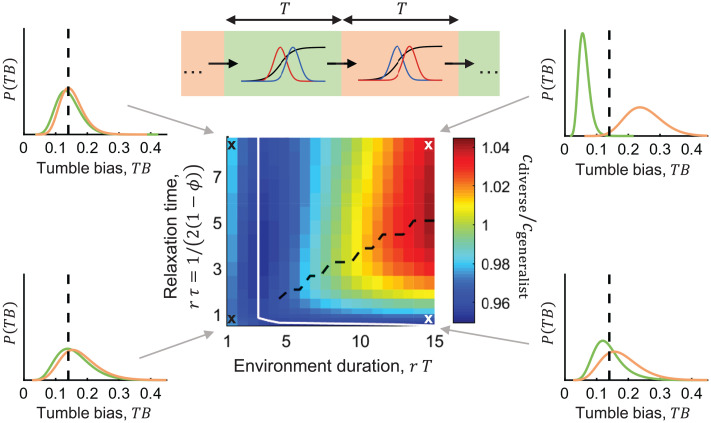Fig. 3.
Diverse populations nongenetically adapt to migrate through varying environments and can outrun a single-phenotype, generalist population in slowly-varying environments. (Top) Schematic of the simulation. Populations with varying mother–daughter phenotype correlation were simulated migrating through liquid and porous environments that switch after a fixed time . (Middle) After many environment switches, the stationary, time-averaged migration speed across the two environments was computed and normalized by that of a single-phenotype, generalist population . Migration speeds (colors) are plotted against the relaxation time of the population’s composition in batch culture, , scaled by the cell-division time , and the environment duration , also scaled by . Note that increases as increases. For a plot with on the y axis, see SI Appendix, Fig. S6. White line separates two qualitatively different regimes. Insets show the phenotype composition at the end of each liquid (green) and porous (orange) environment. Black dashed lines in Insets indicate the generalist phenotype. When the environment varies rapidly (), the population narrows its composition around the generalist phenotype, and larger (larger ) increases migration speed by more effectively narrowing the phenotype composition. When the environment varies slowly (), the diverse population adapts its composition to each environment. An optimal level of inheritance (or ) maximizes migration speed in this regime (black dashed line, Middle).

